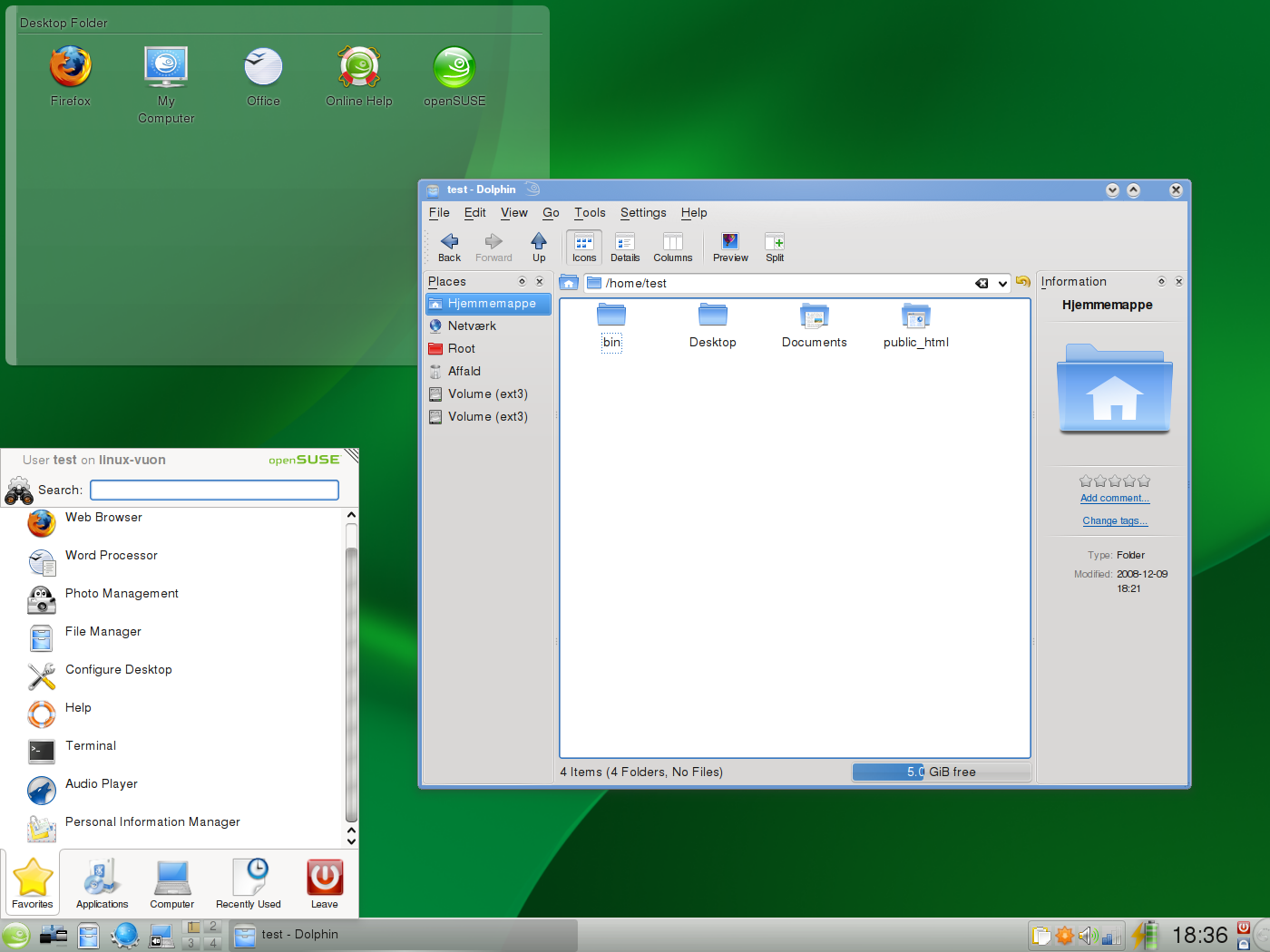A while back, a friend asked me some questions about getting started with Linux. He wanted to know specifically whether he should pick up a copy of RedHat at the local retailer -- for something on the order of $80.
I sent him back some notes about choosing a Linux install (distribution, or "distro"), and thought there might be some information here worth repeating. Incidentally, you might find it worth trying a Linux Live CD (see below) even if you don't think you're a Linux person just to see how your hardware performs with another operating system - it can be eye-opening.
[callout title=Gnome or KDE?]When you start looking at distros, you'll immediately notice that most identify themselves as either a Gnome distro or a KDE distro. Gnome and KDE started out as window managers, which meant that they were responsible for displaying, styling and managing the User Interface. Over time, though, both have turned into extensive library installs, much like Microsoft's .Net framework. If you install a lot of applications, you'll eventually end up with most of both frameworks installed, but only one of them (at a time) will actively run your UI. In any event, you should try one of each and see if you give a hoot which one you use. Read more about them here[/callout]
Don't install yet...
Before you install anything at all, you can play with a one or two versions of Linux to see what you like about each of them. The easiest way for most people to do this is with a Live CD. A Live CD (or DVD) is a bootable image of an operating system. Just download the Live CD image (this will most likely be an ISO file), then burn the ISO file to a disc. Leave the disc in your optical drive, reboot your computer, and make sure your computer is set to boot off the optical drive before it boots off your hard drive.
If you followed along to this point, you should see Linux booting off the disc you just created. It'll start up, detect most of your attached devices, acquire a network address via DHCP, and you should end up with a working Linux desktop in just a few minutes without making any permanent changes at all to your machine. When you're done, just eject the CD and reboot back into Windows.
... or don't install at all
The other way to evaluate Linux distros is with a Virtual Machine. Both Virtual PC from Microsoft and VMWare (Player or Server) are free, and both can be incredibly valuable for testing, development, and so on. Between the two, I'd pick VMWare -- it's fast, stable, and widely supported. Plus, if you choose VMWare, you can download pre-built images from their Appliances site. This can be even faster than using a Live CD once you've got VMWare installed.
The family tree

- Image via Wikipedia
There are probably thousands of Linux distributions, or distros. For some sense of scale, see this list or http://distrowatch.com/. Despite these numbers, there are relatively few popular distros, and almost all of them have been formed by "forking" an existing distribution. Thus, any distro you pick will come from a small number of "root" distros. Take a quick look at this diagram to see what I'm talking about.
Although the specific lineage you pick shouldn't matter much, you'll usually see support articles refer to instructions for one or more of these roots, so it's helpful to know if you're running a Suse-based distro, or a Gentoo-based distro, and so on.
For what it's worth, the most popular general-purpose distro right now is probably Ubuntu, so if you're absolutely flummoxed right now about where to start, that would be a fine one to begin with.
But what about RedHat?
If you've made it as far as firing up one or two distros, you'll realize that you're not going to get much in the RedHat box that you don't get for free somewhere else - after all, that's the Linux way. If you still see something on their feature list that you want to pay for, go ahead, though - at least you're an informed buyer now. Of course, if you insist on buying a distro, Suse's enterprise distro is probably worth a look, too.
Related articles by Zemanta
- How to choose a Linux distribution flow chart (ghacks.net)
- 10+ free, fast-booting Linux distros that aren't Chrome OS (downloadsquad.com)
- Ubuntu 10.04 to Include Beginner's Manual [Ubuntu] (lifehacker.com)

![Reblog this post [with Zemanta]](https://i0.wp.com/img.zemanta.com/reblog_e.png?w=525)
7 Replies to “Choosing a Linux Distribution”
Comments are closed.